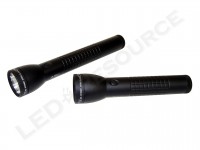 Maglite’s third-generation LED technology, as initially seen on the MagCharger LED, brings multiple performance and usability improvements. With the new ML300L and ML300LX models, the alkaline D-cell lights are now available with many of the same features as the MagCharger LED, including higher output, electronic multi-mode switching, and user-programmable function sets. The ML300L is finished with diamond knurling and type-II anodize like most Maglite flashlights, whereas the ML300LX is a premium model with grenade grip knurling similar to the MAG-TAC and a more durable type-III anodize. Both third-generation models are available as two or three D-cell lights.
Maglite’s third-generation LED technology, as initially seen on the MagCharger LED, brings multiple performance and usability improvements. With the new ML300L and ML300LX models, the alkaline D-cell lights are now available with many of the same features as the MagCharger LED, including higher output, electronic multi-mode switching, and user-programmable function sets. The ML300L is finished with diamond knurling and type-II anodize like most Maglite flashlights, whereas the ML300LX is a premium model with grenade grip knurling similar to the MAG-TAC and a more durable type-III anodize. Both third-generation models are available as two or three D-cell lights.
Key Specifications
- Output (2D): 524 lumens high, 143 lumens low, 58 lumens eco
- Output (3D): 625 lumens high, 143 lumens low, 58 lumens eco
- Intensity: 33,573 candela (2D), 41,200 candela (3D)
- Runtime (2D): 6h 30min high, 20h low, 69h eco
- Runtime (3D): 16h high, 77h low, 117h eco
- Battery: 2 x D-cell or 3 x D-cell
- Length: 9.1″ (2D), 11.8″ (3D)
- Diameter: 2.3″ bezel, 1.5″ body
- Weight with Batteries: 20 oz. (3D), 26.4 oz. (3D)
- Colors: Black, Red, Tan, Gray, Green
- Warranty: Limited Lifetime with $15 Handling Fee
- MSRP: $64.99 (2D), $69.99 (3D)
Pricing & Contents
MSRP for the ML300LX is $64.99 for the two-cell and $69.99 for the three-cell, and the light is available in a matte finish with a choice of Black, Crimson Red, Coyote Tan, Urban Gray, or Foliage Green. Included in the blister packaging is just the Maglite ML300LX and user manual.
Batteries
The ML300LX is designed for use with D-cell alkaline batteries. During our testing, we also used plastic adapters that hold two AA batteries in parallel. Each adapter replaces a single D-cell, allowing us to use rechargeable Sanyo Eneloop NiMH batteries.
The Light
With the exception of the more streamlined head, like the MagCharger LED, the ML300LX has classic Maglite styling plus a type-III anodized finish to protect against scratches and corrosion.
Head
The head features a polycarbonate window and a smooth plastic reflector. Focusing takes less than a quarter turn from end to end, going from flood to spot to flood.
Body
The body-mounted switch is an electronic switch similar to that of the XL- and ML-series lights. Grenade-grip knurling along the body is smooth and easy to grip.
Tail Cap
A band of knurling is found on the tail cap, and the threads are anodized so the light can be locked out with a quarter turn of the tailcap.
Modes
Five modes, which are arranged into four function sets, are available for the user to choose from.
Momentary (2D: 524 lumens, 3D: 625 lumens)
A single press will activate momentary output until the switch is released.
Full Power (2D: 524 lumens, 3D: 625 lumens)
Maximum output.
Low Power (2D: 130 lumens, 3D: 143 lumens)
Low output.
Eco (58 lumens)
Lowest output.
Strobe
12 Hz strobe.
For all modes except for momentary, a single click will turn the light off.
Function Sets
The five available modes are grouped into four user-selectable function sets of three modes. To change the function set, start with the tailcap slightly unscrewed so that the light does not turn on when the switch is pressed. Press and hold the switch while screwing on the tailcap, and once the tailcap is screwed on all the way, the light will start flashing. The number of flashes corresponds to a function set’s number, which are cycled. Releasing the switch selects the function set.
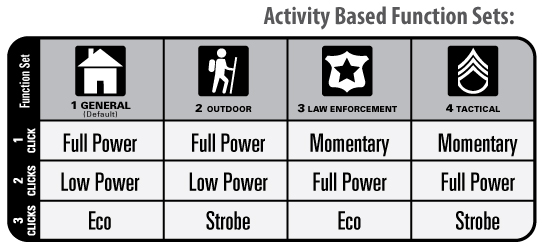
Performance
Using a Cree XM-L2 LED, the ML300LX is rated for 524 lumens on the two-cell model and 625 lumens on the three-cell model. The redesigned focusing assembly eliminates “donut holes” in the beam pattern and makes focusing quicker.
On the two ends of the focusing cam are two distinct flood beams – a slightly larger hotspot with a defined cutoff (left) and a smoother flood pattern (right).
There is a standby current drain of 473 µA (0.473 mA), which can slowly discharge the batteries, especially rechargeable NiMH. If the light will be stored with batteries installed for more than several months, we recommend unscrewing the tailcap until the light does not turn on (usually a quarter-turn).
Runtime
If you haven’t read our article about runtime graphs and the ANSI FL1 Standard, please click here.
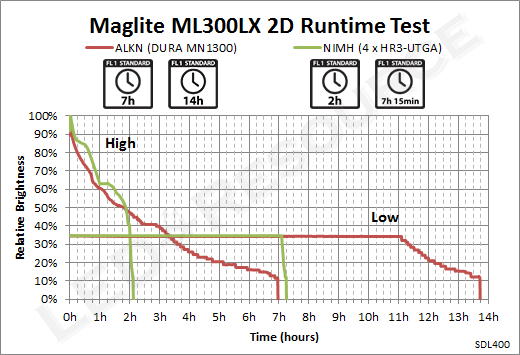
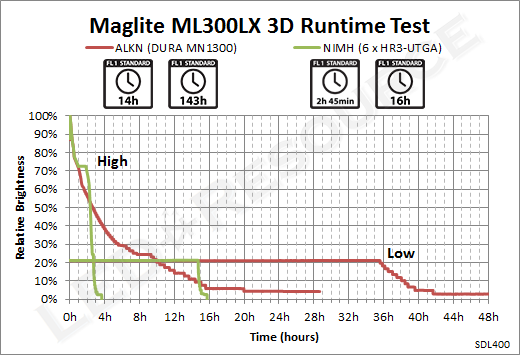
The ML300LX maintains a consistent reduction in output throughout the runtime on Full Power mode, which is mostly due to the behavior of alkaline batteries. Both models have similar runtime characteristics, and the three-cell model produces approximately 50 to 100 more lumens throughout.
Conclusion
The third-generation Maglite D-cell flashlights incorporate many improvements from the MagCharger LED into the ML300L and ML300LX, which are less expensive and use common batteries. These new lights are great for everyday use with outputs of 524 lumens for the two-cell model and 625 lumens for the three-cell model. The improved focusing system is faster and easier to use, and customizable function sets allow certain modes, such as strobe or eco, to be enabled only if desired. Two variants are available with a choice between the standard model Maglite ML300L, or the premium and more tactical-oriented Maglite ML300LX as shown in this review, and both are significant steps up from the previous generation lights.
| Pros |
|
| Neutral |
|
| Cons |
|
Related Links

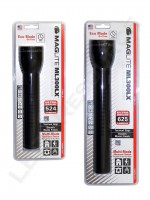
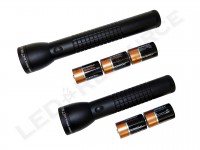
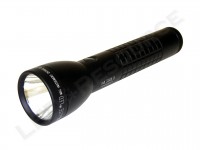
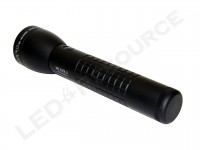
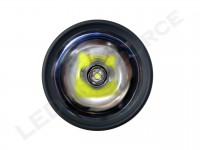
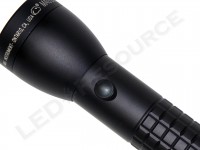
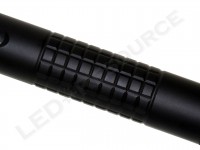
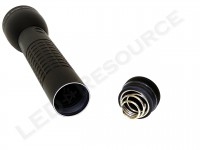
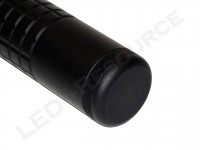
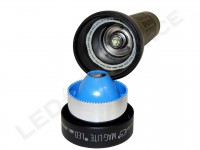
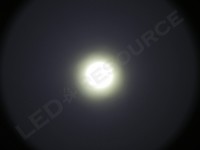
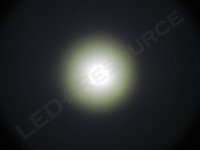
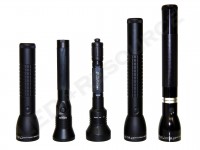


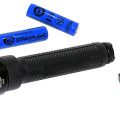
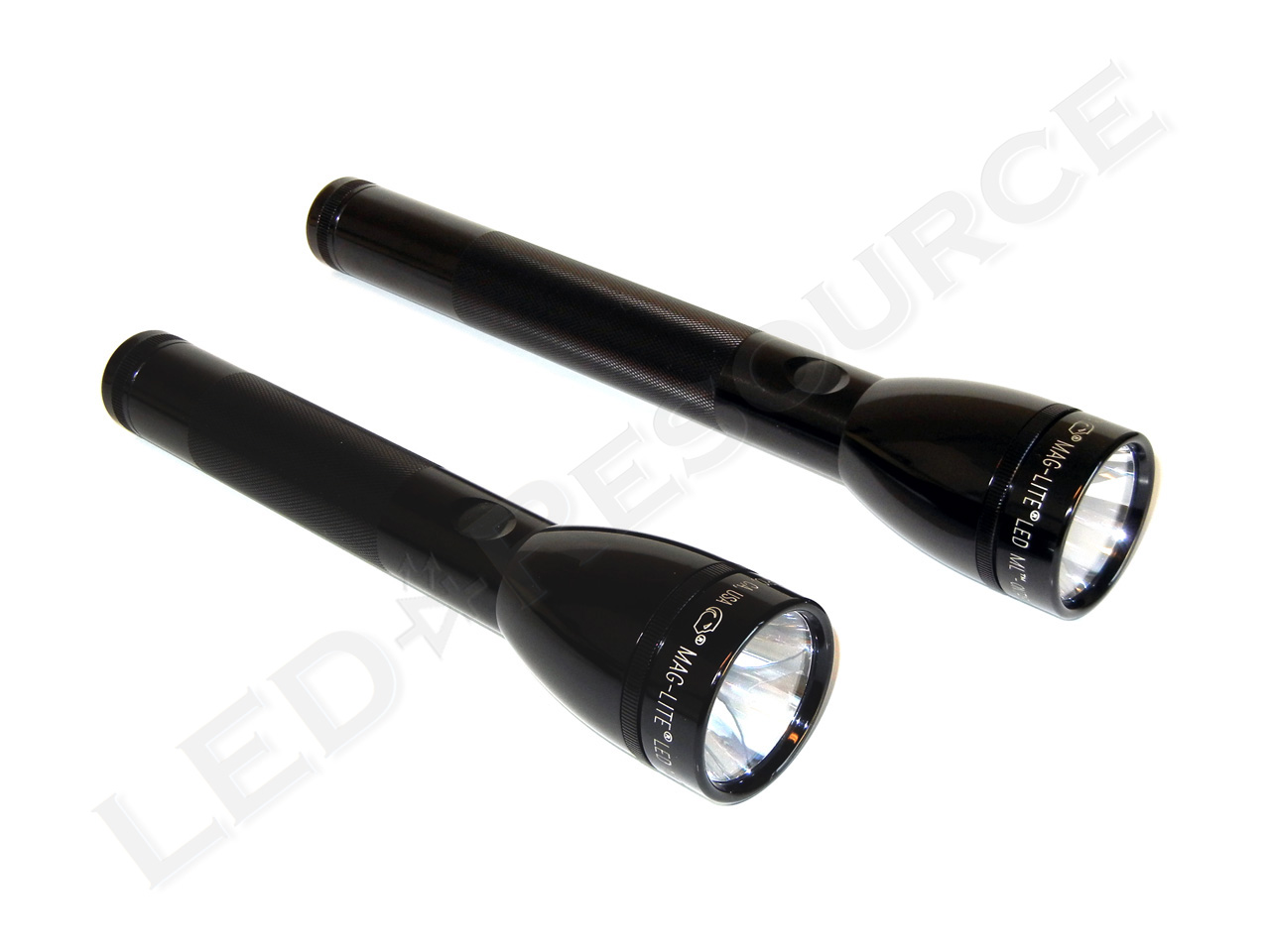

I have become tired of expensive cr123 batteries. I have surefire P3 fury and Mag tac. I want this light but want to use rechargeable batteries. What should I do for that?
Thanks
Khaleeq,
You can purchase 2 AA to D adapters and use rechargeable NiMH in the ML300LX. This setup was what we used for our runtime tests on NiMH.
Robin
thanks Robin Wang. My rechargeable CR123s from K2 energy probably over-discharged in my P3x fury. Immediately I put them on charging, the charger after around half an hour starts blinking red light. They now give me hardly quarter of the normal output and run time. pretty disappointed with the unforgiving P3x fury.
The SureFire P3X does have a fairly high discharge current, so overdischarge is possible, especially if the batteries were already low. Have you contacted SureFire about getting them replaced under warranty?
Robin
Great review as usual. The high mode on both lights looks to be direct drive. Is that your estimation after testing these lights or is there some kind of step down not indicated in your graph? I don’t recall any D cell led maglites using direct drive. There was always some kind of step down and regulation before the “slow death” began. It’s nice to see Maglite crank out more xm-l2 equipped lights.
Thanks,
Chris
Chris,
It’s a little difficult to tell due to the scale of the graphs, but the lights are using step-down regulation (if they were direct drive, alkaline and NiMH runtime graphs would not look so similar). There are several distinct steps for both models, and if I had higher capacity NiMH batteries, you would see the two-cell holding 63% output and the three-cell holding 73% output. The “slow death” that you mention would be at 40% for the two-cell and 25% for the three-cell.
Robin
Hi Robin,
Looks like NiMH D cells would run these lights well….do you have any recommendations/advice on LSD NiMH D cells and chargers?
For the 0.473 mA standby drain, was that the same for both the 2 and 3 cell ML300’s and for both alkaline D’s and NiMH AA’s?
Thanks much for the review!
Sorry, I don’t have any recommendations for NiMH D-cells. I normally use AA’s in D-cell adapters, as those weigh less and don’t require a special charger.
We measured 0.473mA with NiMH in the 2-cell ML300LX, and 0.466mA in the three-cell ML300LX. Self-discharge is the same for both alkaline and NiMH.
Robin
Your graph for the 3 cell shows 36 hours runtime for low and its rated at 77 hours. Is that the correct time of the graph?
Hi Leo,
ANSI FL1 runtime is measured until 10% output. That means for the ML300LX 3-cell, you’ll get 36 hours of constant output runtime and a total of 77 hours runtime until output drops below 10%.
We actually measured 143 hours until runtime drops below 10%, but this large discrepancy actually isn’t surprising. Even when the batteries are almost fully discharged, voltage from three alkaline cells is close to the voltage needed for the LED to operate, which results in a very long tail of reduced output in the runtime graph that hovers above 10%.
The FL1 standard is far from perfect, and three-cell alkaline lights tend to have inflated runtime specifications due to this behavior.
Robin
10% of 625 is a lot of light compared to bulb flashlights. Maglite 3D cell bulb model is rated at 45 lumen for 10 hours, and thats at 4.5 lumen at 10.
Thanks for the write up Robin! I found it to be impressive enough to go ahead and get the 2 cell version! And thanks for the tip about unscrewing the tail cap, as this is gonna be a standby flashlight!
Hi Robin,
You might want to check the low lumen specs. I have an ML300L 3D that has 130 lumens low output. The 2D is rated at 143 lumens low output. It does not make sense but that is what the packages says. Also in your review you stated that the switch is head mounted. It is body mounted. In your conclusion you stated that you could choose certain modes, such as strobe or SOS. These lights do not have SOS. Thanks for the standby information, that will save my batteries. Robin I appreciate all of your reviews, I have been reading them for years.
Thank you, Rick
Hi Rick,
Thanks for pointing out the errors! Always appreciate an eye for detail. These have been fixed now.
I checked the low output values again, and it looks like Maglite’s site has it listed incorrectly (they have the ML300LX 2D listed as 130 lumens low and ML300LX 3D as 143 lumens low, but the page for the ML300L says otherwise). Their product flyer only says “Low Power (up to 143 Lumens)”, which isn’t exactly helpful. I’ll send them a message and make sure the product pages get updated.
Robin
Has anyone tried converting this to 18650 batteries? Curious of the voltage limits of the LED module.
Just read your review of this light. Maglite is improving, but they are still behind the times. They show their lights being used outdoors, yet most of the lights are not waterproof. They still use the adjustable beam, an unnecessary feature. Most other light makers use good size hotspots and generous spill eliminating the need for adjustable beams. Also, I always had a problem on full size Maglites when screwing the tailcap back on the lights. The threads were so small it was difficult to get them lined up to attach the tailcap easily. The plastic lens is also a weak point, It’s hard to believe that Maglite can’t make products that are at least equal to the competition.
Do the LED drivers handle genuine NIMH D batteries?
Duracel Durabeam flashlights do not. Their drivers burn out instantly, relying on high internal resistance of alkaline batteries to regulate current (AAs in D adapters do work, in about half of them). Dirty business by Duracell. They are a battery company after all though, they are interested in selling more batteries.
Jesse,
I haven’t tried it before, but these lights are regulated and didn’t have any issues using a pair of NiMH in place of each D-cell.
Robin
I often see people criticising mag-lites. Most of those who do never grew up with these lights & like many fools are full of unconscious prejudices. Mag-lites are plenty bright enough, so much so border protection, federal & sate police use them. The quality of the lights is proven in their longevity, somthing many of the high powered & impractical China made throwers these days are missing. Mag-lites are damn tough lights & get the job done. Dissing a mag- lite is like dissing a USMC K-Bar. It’s just not smart.
What rechargeable AA batteries did you use?